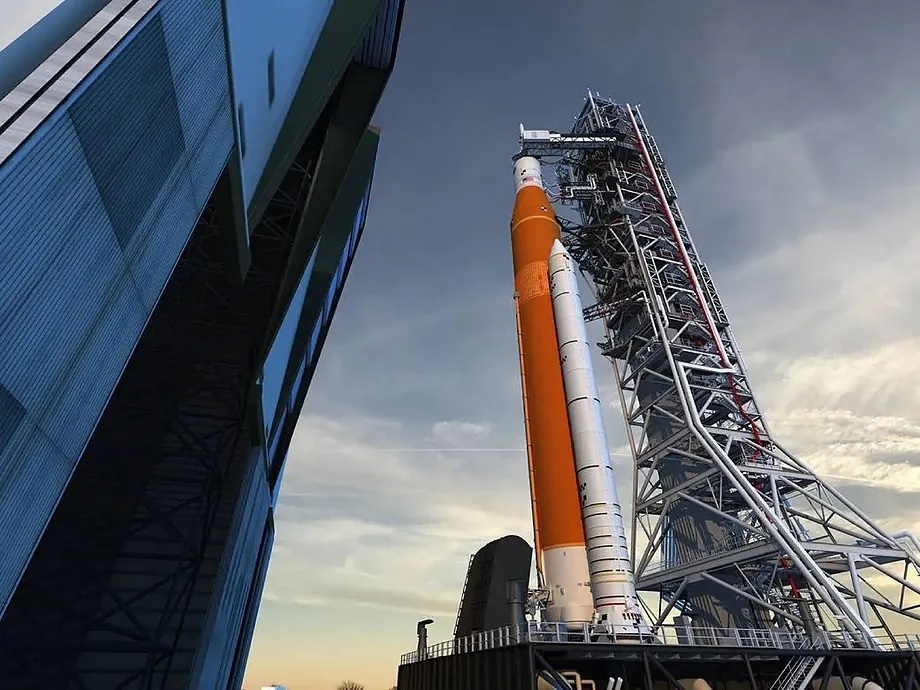The return of humans to the Moon will have to wait. As many space industry experts feared, NASA will not launch its crewed Artemis 2 mission in September 2025 to orbit the Moon, nor will Artemis 3 in 2026 - the mission that will descend to the lunar surface for the first time since the Apollo program concluded in 1972. As announced on Thursday by the director of the U.S. space agency and other officials, Artemis 2 is postponed to April 2026 and Artemis 3 to mid-2027.
"The safety of the astronauts always comes first, we will not fly until it is as safe as possible for them," stated Bill Nelson, NASA director.
The Artemis II crew will consist of four astronauts: Americans Reid Wiseman (who participated in the press conference), Christina Koch, and Victor Glover, and Canadian Jeremy Hansen. Their mission will involve a 10-day journey aboard the Orion spacecraft, which will orbit our satellite without landing. "Victor, Christina, Jeremy, and I have been following every aspect related to the decision," noted mission commander Reid Wiseman, who admitted that "delays are distressing."
The main reason for postponing Artemis 2 has been the time taken to understand the causes of the issues detected in the thermal shield of the Orion spacecraft during the unmanned Artemis 1 test mission conducted at the end of 2022. Although the launch aboard the Space Launch System (SLS) rocket and the return to Earth of the spacecraft proceeded without major incidents, the thermal shield suffered damage and an unexpected loss of material during the reentry phase to Earth. This issue underwent a thorough investigation that included about a hundred tests, as indicated by NASA officials.
Reentry into the atmosphere is a critical phase in any mission, as the spacecraft must withstand infernal temperatures of over 2,700 degrees and reduce its speed in a few minutes, going from 42,300 to 520 kilometers per hour before the parachutes are deployed for a splashdown in the Pacific Ocean.
As explained by Pam Melroy, NASA's deputy director, the charred material of Orion's thermal shield wore differently than engineers expected. The investigation concluded that the shield did not allow enough gases generated in a material called Avcoat to escape, causing a part of it to crack and break. Although there were no people on board during the test flight, NASA assures that the data show that the temperature inside the spacecraft would have been safe if the crew had been on board.
Engineers have recently identified the cause, and despite having developed a plan - Nelson mentioned they would use the Orion capsule with its original thermal shield but make changes to the reentry path - it has been decided to delay Artemis 2 by eight months.
"We have made significant progress over the past four years, and I am proud of the work that has been done... We need to get this next test flight right," stated Nelson, who described the Artemis program as "the boldest international project with more technical challenges that humanity has set out to achieve."
The term of former congressman Bill Nelson, 82, at NASA is about to end. And although Donald Trump will not be sworn in as U.S. president until January 20, his influence and that of Elon Musk are already being felt in many areas, including space. On Wednesday, Trump selected billionaire Jared Isaacman as a candidate to lead NASA, founder of the payment processing company Shift4 Payments and the first private astronaut to walk in space. He achieved this last September during the Polaris Dawn mission with SpaceX, his friend Elon Musk's company. Engineer Sarah Gillis also ventured into space during this mission, testing SpaceX-designed spacesuits for future lunar expeditions aboard the Dragon spacecraft.
In 2021, Isaacman made his first space trip, also private and aboard a SpaceX spacecraft, on Inspiration4, the first orbital mission with only civilian passengers.
The nomination of 41-year-old Jared Isaacman must be approved by the U.S. Senate. Due to his association with SpaceX, a company that has received numerous significant contracts from NASA, including the Starship module from which the astronauts will descend to the Moon on the Artemis 3 mission, a conflict of interest may arise if he becomes NASA's top official. His profile is also not typical among the agency's previous directors. Although an experienced aviator who has been to space twice, Isaacman was until recently essentially a space enthusiast.
During his previous term, Donald Trump also made a controversial appointment by selecting Jim Bridenstine, a climate change denier with little management experience and no connection to the space sector, as NASA director.
